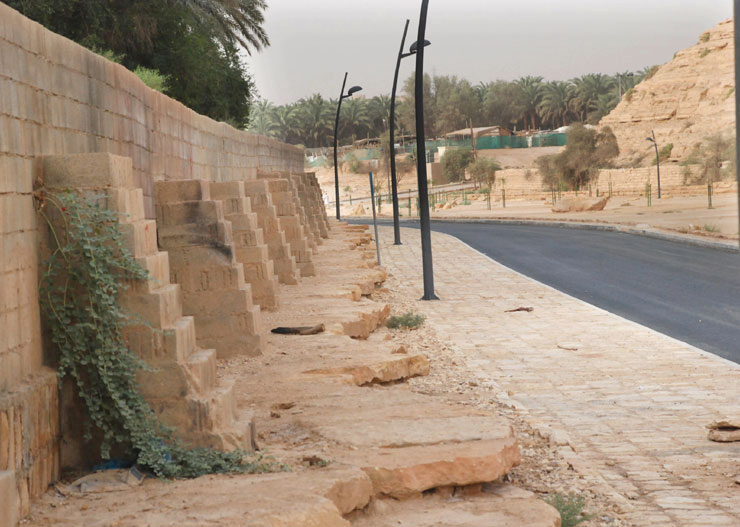LOC10:02
07:02 GMT
 Wadi Hanifa ... from Riyadh's waste disposal to main attraction
Wadi Hanifa ... from Riyadh's waste disposal to main attraction
RIYADH, July 6 (KUNA) -- Wadi Hanifa, located in the Saudi capital Riyadh, has transformed from being a garbage waste dumb into the largest open resort in the country.
The resort, stretching over more than 80 km from northwest to southwest, was named after one of the most prominent Arab tribes "Banu Hanifa" who inhabited the area in the pre-Islamic era.
The Wadi (valley) which became a main attraction for both locals and tourists in Saudi Arbaia to enjoy the moderate weather and spectacular views, was able to maintain balance between nature and human activities up till the beginning of the fifties.
As time progressed, the construction expansion in Riyadh has destroyed the environmental balance in the Wadi, leading to erosion. Moreover, industrial activities were launched in the area, turning it into a dumb for garbage and construction waste.
In 1986, Arriyadh Development Authority had announced that the Wadi would be a natural reserve and had set a plan to turn the dumb into the largest natural resort in the country, to attract local and foreign visitors and encourage investments.
The redevelopment plan involved creating water channels, green corridors, walking trails, paving routes and creating spots for visitors to observe the spectacular views the Wadi has to offer.
The Wadi has over 40 tributaries running through it, while it still embraces the remains of its traditional environment, including villages, farms and orchards.
The authority had executed great efforts to clear the Wadi of any pollution and provide people with all services they need in the area, resort's visitor Ali Al-Juaid told Kuwait News Agency (KUNA).
Citizens in Riyadh were in need of such entertainment in the city, having the opportunity to enjoy nature and clean environment away from closed places, he added.
Meanwhile, Adel Al-Humoud on his part, said that the resort is a place of peace and tranquility away from the noise in the city, noting that Saudi has the ability to be one of the most prominent tourist destinations in the region.
As for citizen Zaid Al-Amari, he hoped water channels in the Wadi would be further developed, also noting the need of sign boards to guide visitors through the resort's sections.
The Wadi is still a source of water and agriculture for people in villages and towns surrounding the area, said Al-Amari, adding that the resort could attract more tourists if it also involved cultural and entertainment events.
The resort consists of six sections of lakes and dams, all including walking trails, seating, coffee shops, car parkings, restaurants and prayer rooms.
Rain falls with great intensity for short periods, causing flash floods in the area. The nature of the dry, warm climate in the valley leads to a high percentage of the scarce rainfall being instantly evaporated.
The location of the wadi in the center of the Arabian peninsula was vital as it became a main commercial road in the ancient times, connecting Mesopotamia with Hejaz while also connecting the penisula's northern and sourthern provinces.(end)
yms.ag